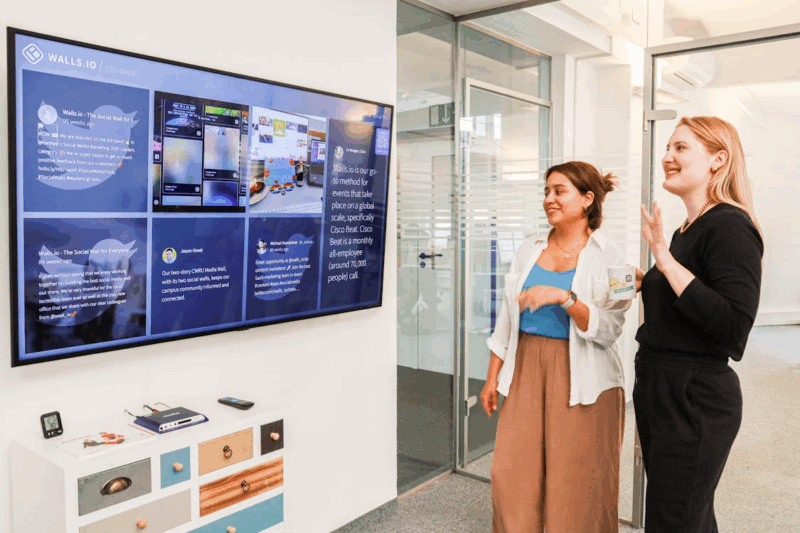
In today’s digital age, having a seamless and effective website is essential for businesses, organizations, and individuals alike. Whether you’re looking to establish an online presence or share your portfolio, creating a webpage that resonates with your audience is key. However, building a website from scratch can be a complex task, especially for those without technical expertise.
Fortunately, with the abundance of website-building platforms, creating a professional-looking webpage has become more accessible than ever.
This guide aims to provide tips, tricks, and templates to help you create a seamless website in no time.
Essential Steps for Planning Your Website
Planning and preparation are crucial steps in creating a successful webpage that can effectively communicate your message.
Here’s how to approach this phase:
Firstly, define your website’s purpose and target audience. Clearly articulate what message you want to convey and who you are trying to reach. Understanding your audience’s needs and preferences will inform the design and content decisions throughout the creation process.
Next, outline the key features and functionalities you need for your webpage. Consider elements such as contact forms, image galleries, e-commerce options, or any other specific requirements relevant to your goals. This step helps ensure that your site meets your business objectives and provides a seamless user experience for visitors.
When choosing a domain name and web hosting provider, it’s essential to consider several factors. According to Search Engine Journal, a domain name should typically match the business name. However, there may be instances where rebranding for online purposes is necessary.
Factors such as changing trends or the desire for a more attractive or snappy domain name might influence this decision. It’s advisable to register a domain name that aligns with the business, even if the online site uses a different name.
Additionally, factors like cost, reliability, and ease of use should be considered when selecting a web hosting provider. The cost of building a site varies depending on several factors, as highlighted by Small Business Trends.
For businesses aiming to promote products and services, the cost typically ranges from $1000 to $7600. However, those requiring additional features like a booking facility may expect to spend around $3600 to $10,000. E-commerce businesses sellin

g varying volumes of products daily can anticipate costs ranging from $5000 to $55,000.
The complexity of the site, the choice of domain and hosting company, and the method of website creation all contribute to the overall cost.
Choosing the Right Tools
When it comes to creating a webpage, choosing the right tools is essential for achieving your desired outcome efficiently and effectively. One key decision you’ll need to make is whether to use a website builder or code your site from scratch.
Web page builders provide a user-friendly interface and drag-and-drop functionality, making them accessible to individuals with little to no coding experience. Platforms like the GLASS website builder offer a wide range of templates and customization options.
According to GLASS, this enables users to create a professional-looking site without the need to write a single line of code. These platforms often feature sleek and modern templates specifically designed for businesses catering to various industries and niches.
On the other hand, coding from scratch provides unparalleled control and flexibility over every aspect of your site’s design and functionality. With coding languages like HTML, CSS, and JavaScript, you can create a completely custom webpage tailored to your specific requirements.
This approach is ideal for those with coding expertise or specific design needs that cannot be met with pre-built templates. However, coding from scratch requires a significant time investment and technical knowledge, making it less accessible to beginners.
In addition to webpage builders and coding from scratch, there are alternative solutions available. Pre-built templates offer a middle ground between website builders and coding, providing customizable designs that can be easily modified to suit your needs.
Alternatively, hiring a freelancer or web development agency allows you to leverage the expertise of professionals to create a site tailored to your specifications.
Ultimately, the right approach for you will depend on your skill level, budget, and specific requirements.
Tips and Tricks for Creating a Seamless User Experience
When it comes to creating a successful webpage, implementing effective tips and tricks can significantly enhance its performance and user experience. Here are some essential strategies to consider:
- Starting with a simple design is crucial to avoid overwhelming users with complex layouts and excessive features. A clean and intuitive design not only makes navigation easier but also ensures that your message is conveyed clearly to your audience.
- Using clear and concise language is another key aspect of creating a user-friendly website. Make sure your content is easy to understand, especially for your target audience. Avoid jargon and technical terms that may confuse visitors, and strive for clarity and simplicity in your messaging.
- Optimizing your webpage for search engines is essential for improving its visibility and attracting organic traffic. Forbes emphasizes the critical role of search engine optimization (SEO) as a fundamental digital marketing strategy for businesses.
SEO involves optimizing your webpage to achieve higher rankings on search engine results pages (SERPs), particularly on platforms like Google. The primary goal of SEO is to attract organic traffic to your site. This is in contrast with paid advertising, where visitors are acquired through unpaid searches.
With approximately 8.5 billion daily searches conducted on Google alone, SEO presents significant opportunities for promoting products and services. Achieving a high ranking on Google is paramount for increasing site traffic and maximizing visibility to potential customers.

- Regularly testing and refining your website is also crucial for ensuring its functionality and user experience. Test your webpage on different devices and browsers to identify any compatibility issues or usability concerns.
Leveraging Templates and Resources
Using templates and resources can streamline the webpage creation process and improve the final result. To begin, selecting a suitable template from the options provided by your chosen platform is essential.
These templates vary in style and layout, so it’s crucial to choose one that aligns with your brand identity and objectives. Prioritize templates that offer visual appeal, mobile responsiveness, and easy customization to ensure they align with your vision seamlessly.
Furthermore, taking advantage of helpful resources such as tutorials, design inspiration, and site builder documentation can provide significant benefits. Tutorials provide step-by-step guidance throughout the website-building process, covering everything from basic setup to advanced customization.
Drawing inspiration from various design sources can stimulate creativity and offer ideas for improving your site’s visual appeal and functionality.
Additionally, consulting webpage builder documentation can offer valuable insights into platform-specific features and functionalities. This enables you to maximize the potential of your chosen tools and optimize your website for success.
In conclusion, creating a website in no time is no longer a dream but a reality. By following these tips and tricks, you’re well on your way to building a seamless online presence that captivates your audience.
Remember, the key lies in planning, choosing the right tools, and utilizing available resources effectively. Don’t be afraid to experiment, personalize your chosen template, and add your unique touch. With dedication and a dash of creativity, you can launch a webpage that looks stunning and delivers a seamless user experience.
What are you waiting for? Start building your dream site today and take your brand or passion project to the next level.










